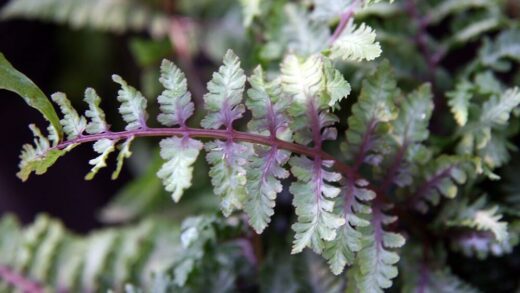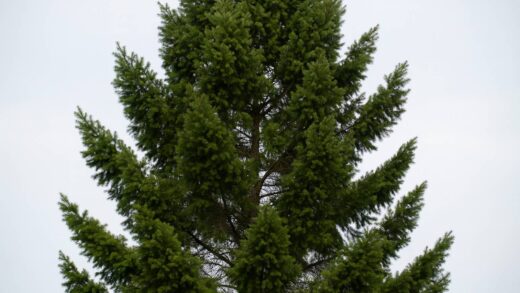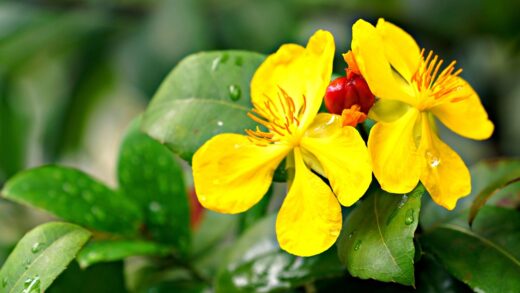The successful wintering of glory-of-the-snow is a testament to their remarkable hardiness and adaptation to cold climates. These bulbs are native to mountainous regions and are not only tolerant of freezing temperatures but actually require a prolonged period of cold for proper flower development. For the gardener, this means that winter care is generally straightforward and requires minimal intervention. The primary goal is not to protect the bulbs from the cold itself, but rather to shield them from adverse winter conditions such as excessive moisture, freeze-thaw cycles, and the foraging of hungry animals. By understanding the bulb’s dormancy and implementing a few simple preparatory steps in the autumn, one can ensure that their glory-of-the-snow will survive the winter with ease and emerge with vigor in the spring.
The winter period is a phase of dormancy for glory-of-the-snow. After completing their growth cycle in the spring and resting through the summer, the bulbs remain inactive underground, awaiting the chilling temperatures that are a necessary trigger for their biological clocks. This cold stratification period is essential for stimulating the biochemical processes that lead to stem elongation and flower bud formation. Without a sufficient cold period, the bulbs may produce leaves but fail to flower.
Therefore, the main focus of winter care is to provide a stable environment for the dormant bulbs. In regions with reliable and consistent snow cover, nature provides the best possible protection. A thick blanket of snow acts as a perfect insulator, keeping the soil temperature relatively constant and protecting the bulbs from the desiccating effects of winter winds and the damaging cycles of repeated freezing and thawing.
In climates where snow cover is unreliable, the gardener can step in to mimic these protective effects. The application of a winter mulch is the most common and effective technique. This, combined with ensuring the planting site is well-drained to prevent winter wetness, constitutes the entirety of the care needed. With these simple measures, glory-of-the-snow will be well-prepared to endure the harshest winter weather.
The natural winter dormancy of chionodoxa
Winter dormancy is a critical survival mechanism for glory-of-the-snow, allowing them to withstand the freezing temperatures of their native alpine habitats. This period is not simply a passive state of rest; it is an active, physiological process that is essential for the plant’s life cycle. During the autumn, as soil temperatures drop, the dormant bulb begins to develop its root system. These roots anchor the bulb and prepare it to absorb water and nutrients as soon as the soil thaws in the spring.
More articles on this topic
The most crucial aspect of this dormancy is the requirement for vernalization, which is the induction of a plant’s flowering process by exposure to prolonged cold. Glory-of-the-snow bulbs must experience a significant period of cold temperatures, typically below 5 degrees Celsius, for several weeks. This cold treatment is a non-negotiable prerequisite for them to bloom in the spring. It is the reason why these bulbs are so well-suited to temperate and cold climates and why they do not perform well in warmer, subtropical regions that do not experience a true winter.
Throughout the coldest parts of winter, the bulb remains in a state of deep dormancy. All metabolic activity is reduced to a minimum, and the bulb’s tissues contain natural antifreeze properties that help them resist damage from ice crystal formation. The energy stored within the bulb from the previous spring’s photosynthesis is carefully conserved, ready to be deployed for the rapid burst of growth that will occur as soon as the conditions are favorable.
This natural adaptation to cold means that gardeners in appropriate hardiness zones do not need to worry about the bulbs freezing. The plants are fully equipped to handle typical winter conditions. The gardener’s role is simply to ensure that the environment does not present other challenges, such as waterlogged soil, which can be fatal to a dormant bulb regardless of its cold hardiness. Understanding this innate toughness allows the gardener to have confidence in the plant’s ability to survive the winter.
Preparing the garden bed for winter
Preparation for winter begins in the autumn, well before the first hard frost. The most important task is to ensure the garden bed where the glory-of-the-snow are planted is clean and free of debris. Removing spent annuals and cutting back the foliage of neighboring perennials can help to improve air circulation and reduce the overwintering sites for pests and disease pathogens. This general garden hygiene is a simple but effective step in maintaining a healthy environment for the bulbs.
More articles on this topic
It is also a good time to assess the soil and drainage. If the area where the bulbs are planted was observed to be overly wet during the previous season, autumn is the last chance to take corrective measures. This could involve creating a small diversionary channel to direct excess water away from the bed or carefully lifting the bulbs and replanting them in a raised area or on a slight mound. Ensuring that the bulbs do not sit in cold, waterlogged soil over the winter is paramount for their survival.
Once the ground has begun to cool but before it freezes, a final light watering can be beneficial, especially if the autumn has been dry. This ensures that the soil around the developing roots is moist, which helps them to establish properly before the ground freezes solid. However, this should only be done if the soil is genuinely dry; if there has been adequate autumn rainfall, no supplemental watering is necessary.
The final step in preparing the bed is to consider protection from animal pests. As other food sources become scarce, squirrels, chipmunks, and voles may be more inclined to dig for bulbs. If these animals are a known problem in the garden, covering the planting area with a sheet of hardware cloth or chicken wire after the ground has frozen can be an effective deterrent. The wire can be secured with landscape staples and then covered with a layer of mulch for aesthetics.
The role of snow cover and mulch
In an ideal winter scenario for glory-of-the-snow, a deep and persistent layer of snow covers the garden from early winter until the spring thaw. Snow is an exceptional insulator, containing a large amount of trapped air. A thick blanket of snow maintains a relatively stable and moderate temperature in the soil beneath it, protecting the bulbs from the extreme cold of the air above and, more importantly, from rapid and repeated temperature fluctuations. This stable environment is perfect for the dormant bulbs.
However, in many regions, consistent snow cover cannot be relied upon. Winters may be characterized by periods of deep cold with no snow, followed by thaws and then refreezing. These freeze-thaw cycles can be damaging to dormant bulbs. The expansion and contraction of the soil can heave the small bulbs upwards, potentially exposing them to the air and causing them to dry out or freeze solid. It is in these situations that the gardener should provide a substitute for the insulating blanket of snow.
Applying a layer of organic mulch is the best way to achieve this. After the ground has frozen, typically in late autumn or early winter, a two- to three-inch layer of light, airy mulch can be spread over the planting area. Excellent materials for this purpose include shredded leaves, pine needles, straw, or pine bark mulch. The purpose of this winter mulch is not to keep the ground warm, but rather to keep it frozen and at a constant temperature, thereby preventing the damaging effects of freeze-thaw cycles.
This layer of mulch also provides secondary benefits. It helps to conserve soil moisture, preventing the ground from drying out excessively from harsh winter winds. It also offers an additional layer of protection against rodents that might be tempted to dig for the bulbs. In the spring, as the ground begins to thaw, this mulch layer should be gently raked back or removed to allow the new shoots to emerge into the sunlight without obstruction.
Winter care in containers and pots
Cultivating glory-of-the-snow in containers and pots requires a different approach to winter care compared to garden-grown bulbs. The soil in a container is exposed to the cold air on all sides, meaning it will freeze much faster, more deeply, and experience more extreme temperature fluctuations than the soil in the ground. This makes the bulbs in pots far more vulnerable to winter damage. Without proper protection, the bulbs can be killed by the extreme cold.
To successfully overwinter container-grown glory-of-the-snow, the pots must be insulated. One effective method is to move the pots into an unheated but sheltered location, such as a cold frame, a shed, or an unheated garage. These locations will protect the pots from the harshest temperatures and winds while still allowing them to get the necessary cold period for vernalization. The soil in the pots should be kept barely moist throughout the winter, receiving just enough water to prevent it from drying out completely.
If a sheltered location is not available, the pots can be protected in place. One technique is to group the pots together against a sheltered wall of the house, preferably on the north or east side to avoid winter sun that could cause premature warming and thawing. The group of pots can then be heavily insulated by surrounding them with a thick layer of bubble wrap, burlap bags filled with leaves, or by mounding straw or shredded leaves around and over them completely.
Another method is the “pot-in-pot” technique, where the decorative pot containing the bulbs is placed inside a larger pot, and the gap between the two is filled with an insulating material like sand, wood chips, or styrofoam peanuts. Alternatively, the pot can be sunk directly into an empty space in a garden bed, allowing the surrounding soil to provide natural insulation. Regardless of the method used, the goal is to buffer the container from extreme temperature swings and ensure the bulbs experience a cold, but not lethally cold, winter.


















